V Balakrishnan, Singapore-based dancer, shares his life’s journey with Bharatanatyam in conversation with Vidhya Nair
How did you first become acquainted with the world of dance?
From a very young age, I accompanied my mother, an avid film-goer to the cinemas. As the only son amongst five daughters, I was her pet. I responded to colours and music early on and my mother tells me that I was a natural dancer. The movies were and still are a great source of inspiration for me.
In my younger days, to be a male dancer was considered a taboo. At school, I was active in all things arts. I sang tenor in my school choir without any prior training and acted in a number of English musical dramas – Love Boat, Andy, Get your Gun, Dance with Waltz, just to name a few.
My father was aware of my interest and talent but insisted I focus on my academics. He wanted me to land a stable government job, settle down, have children and build for myself a typical middle-class life. It was unknown to us then that my life would not fit with their original expectations.
Your first career was in the media. Was this how you came to be acquainted with classical dance?
Yes. I am a media veteran. I worked for the RTS (Radio & Television Singapore, later Singapore Broadcasting Corporation then Mediacorp) from 1976 till 2006. I first encountered established dancers who would come in for a live recording. I was fortunate to be assistant director for a number of recordings, thanks to my avid interest in music, staging, lights and camera.
I met Lakshmi Viswanathan, Chitra Visweswaran, the Dhanajayans, Anuradha Jagannathan, Srividya, our own Madhavi Krishnan and Balagopalan of Kalakshetra. Luckily for me, Balagopalan had taken up a stint in SIFAS, so I requested him to accept me as his student. This was way back in 1977. He accommodated me and I took individual classes with him at 9pm. I learned Thattadavu and Nattadavu from him.
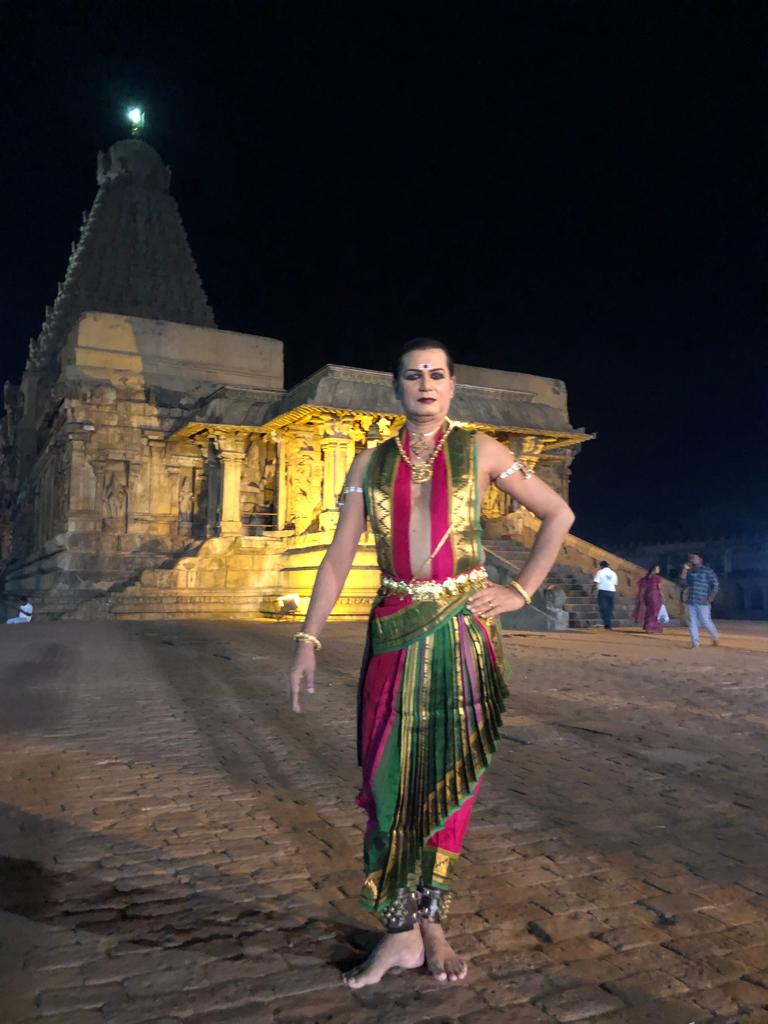
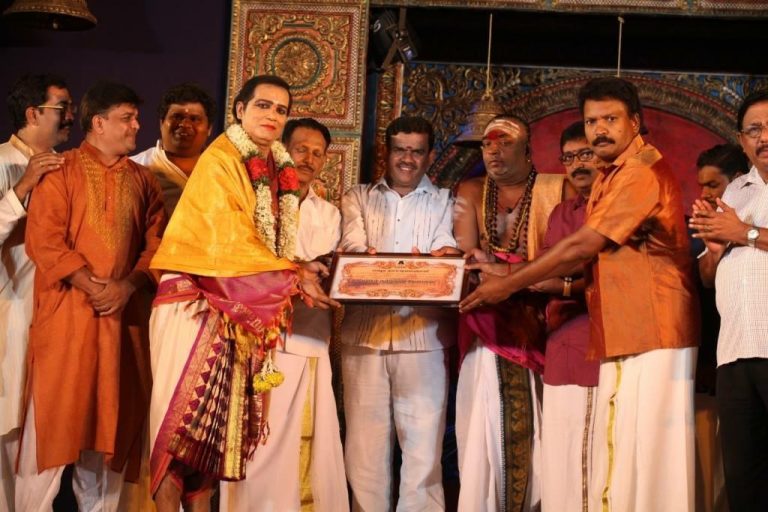
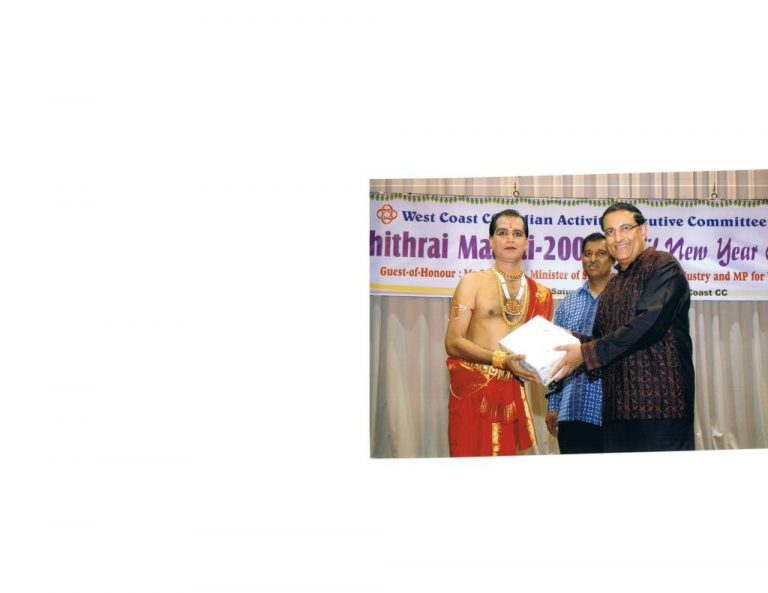
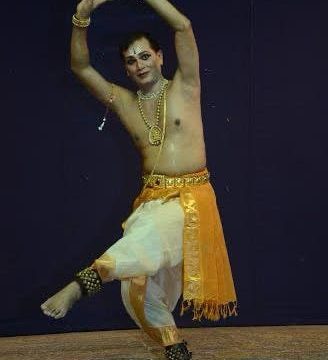
Unfortunately, this didn’t last long as he had to return to India and around the same time, my father suddenly passed away. I was only 23. It turned out that he had liver cancer which had remained undiagnosed. Looking after the family became my sole responsibility. My younger sisters were still in school. Between my mother and I, we looked after the family. I couldn’t continue to learn but there was a fire in me to find a way, somehow.
How did you find a way to learn Bharatanatyam?
It was a coincidence that I came to be introduced to Swami Shantanand Saraswathi (Swamiji) in 1979 whom I was drawn to instantly. I started to attend his regular Akhanda bhajan sessions. There, I had the opportunity to choreograph and dance. In 1981, when Swamiji founded Kala Mandir in Singapore and Kuala Lumpur, I began dancing in their earliest production – Dattatreya – where I performed Jatiswaram for a song based on Lord Muruga. It was there I came to be acquitted with Mrs Shanta Bhaskar who was a faculty member there and we performed on stage together too.
In 1986, I met Neila Satyalingam (Maami). I was instantly drawn to her; she was confident and glamorous. Her first lesson was Khanda Alarippu. I had no idea what it was. I had to take help from others. That’s how I learned my Bharatanatyam.
To learn the basics as an adult, it was very difficult. By this time, I had already received vocal Carnatic training lessons with K S Ganapathy and Nageswaran at Kala Mandir and spent a month with Karaikudi Krishnamoorthy learning the basics of the Nattuvangam. I had also taken classes in Sanskrit at the Ramakrishna Mission. My career in media was also steadily progressing, I was producing artistic shows, working with many individuals and arts groups; my network was growing. This gave me the motivation to pursue Bharatanatyam seriously.
What was it like being a student and performer with Maami and Apsaras Arts?
My most influential teacher was Neila Maami. I continued to learn with her all the way till 2006. As she was teaching with Apsaras Arts and People’s Association, she was actively creating many shows and productions. The need for male dancers became necessary for the many character roles Maami had envisaged. I introduced Maami to many promising young male dancers – Charles, Manimaran, Moorthy, Guna, to name a few, and later on, to young G Selva and Veshnu, all of whom came to be part of Maami’s many productions.
Maami offered us training and exposure along with many of her Kalakshetra contacts who came to Singapore to teach. Some of my most memorable lessons include sessions with Shanta Dhananjayan. In an individual class, I learned the Keerthanam, Aananda Nadamidum Padan. Just by her singing line by line to me, I absorbed the piece quickly. I put that piece to practice swiftly with a performance alongside Suganti and Jayanti Kesavan.Shanta Dhanajayan also taught me the Varnam, Mayam Edho Swami. All the intricate nuances in a week, I still hold dear until today. I learned from Maami, Swami Naan Undan Adakai with recorded music, and later many of Adyar Lakshmanan’s choreographic pieces.
All of these items I have performed over and over again at temples with the voices of Satyalingam Mama and Mohana Harendran in live recitals. My love for live music for a recital was set. I also learned from Krishnaveni Lakshmanan when she visited to teach us as well. Learning this way and performing regularly seasoned me as a performer and my deep love and appreciation of Carnatic Music and the Tamil language helped me establish myself as a familiar and regular performer at temple festivals and on television.
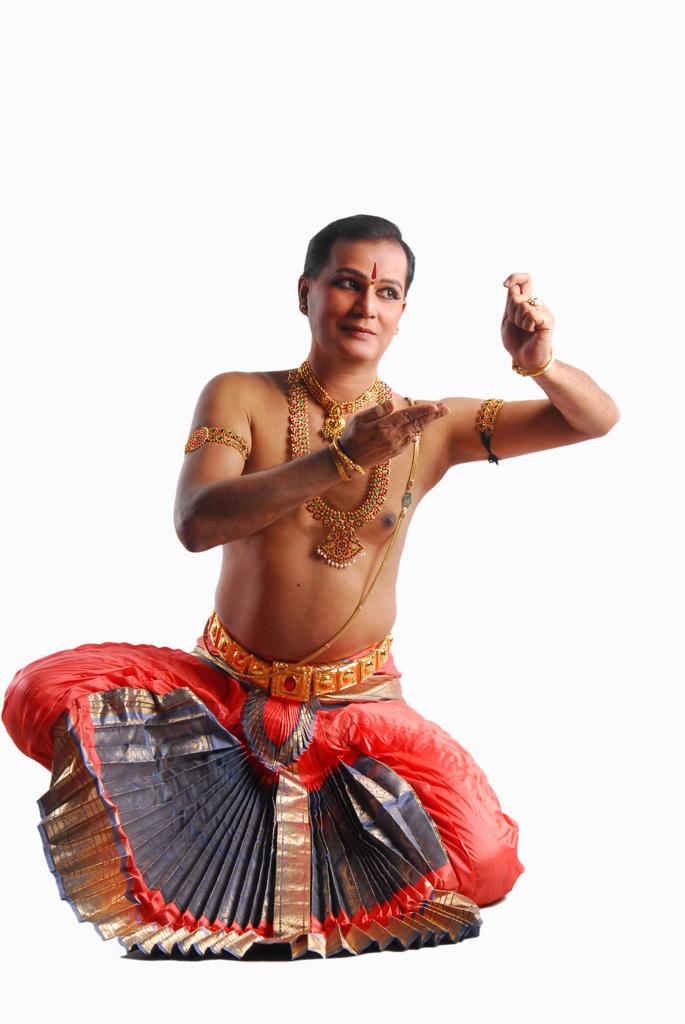
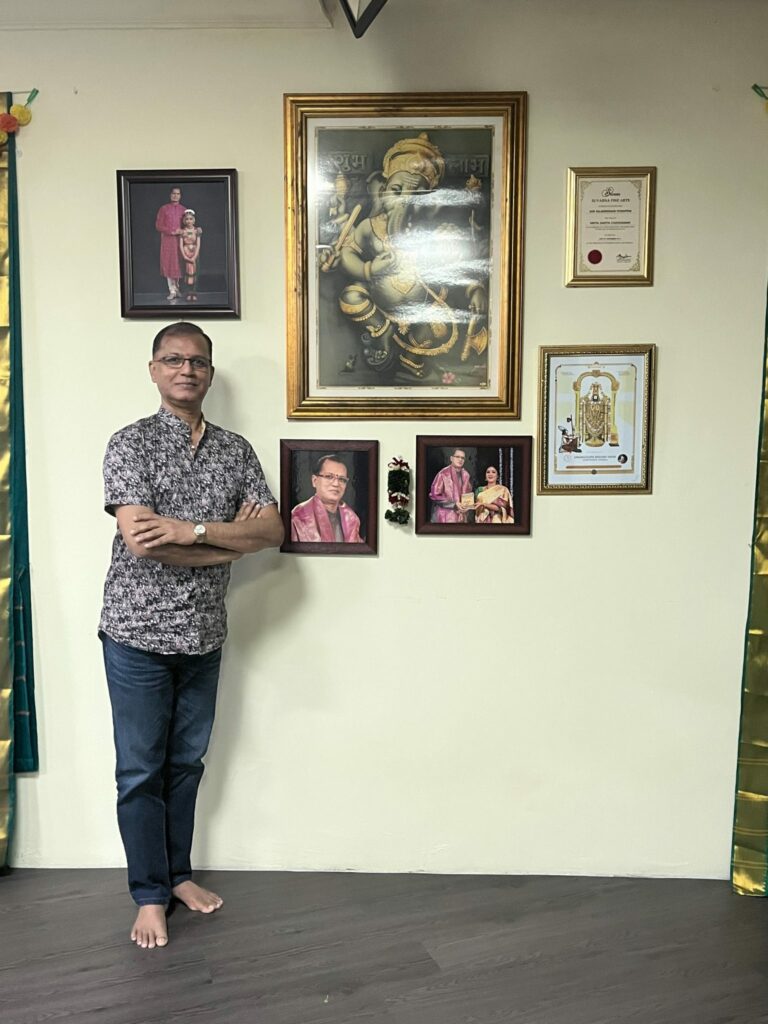
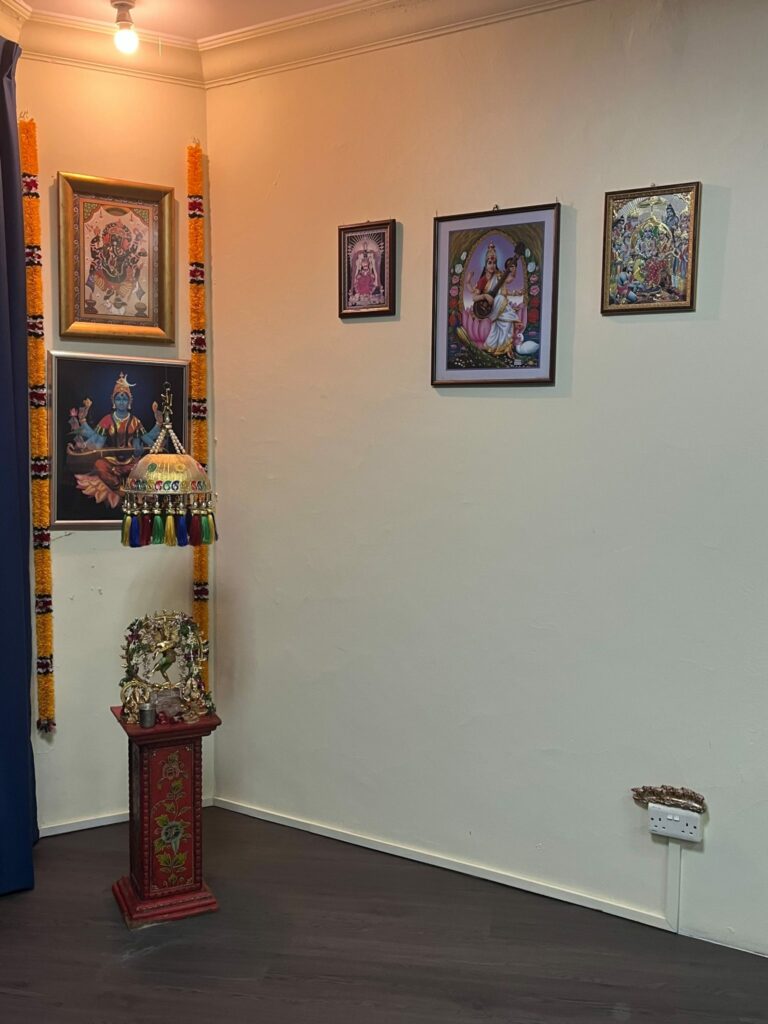
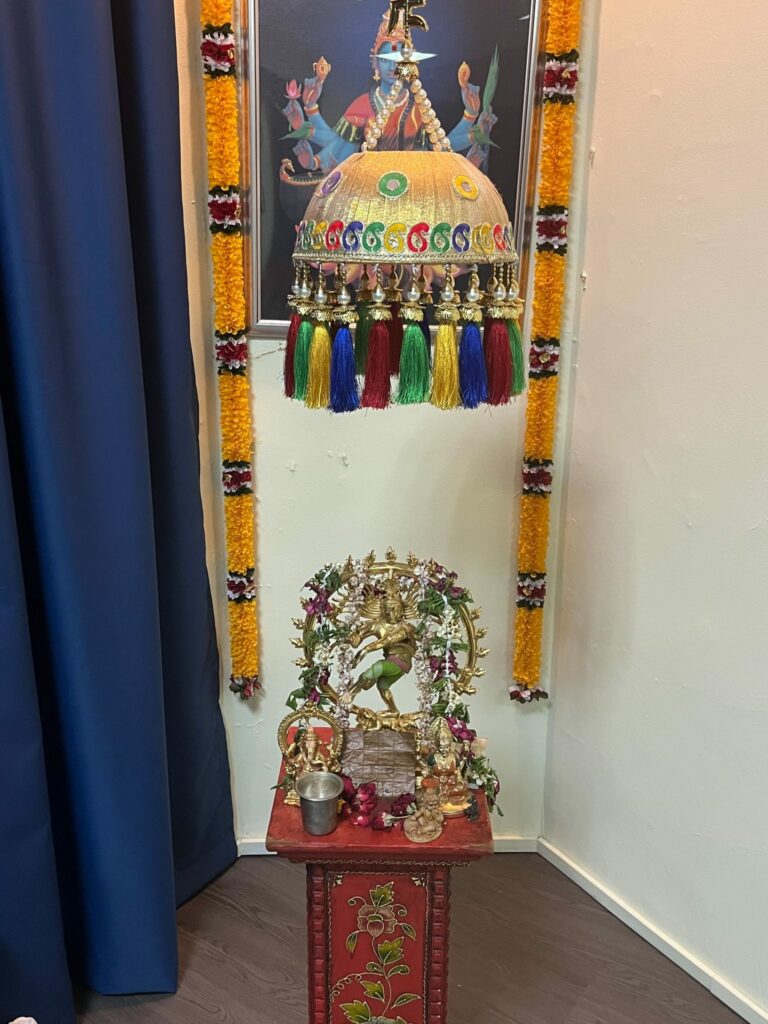
I recall a lesson in 1986 with Maami when she was teaching Ananda Nadamaduvar Thillai. The experience was so surreal, I felt Lord Nataraja had come himself to teach me. The lyrics consumed me fully and on that day, Maami was in a particularly stern mood. She kept pulling me up and pushed me to give my best. Today, I can say that I have now danced this item more than a hundred times and Neila Maami herself has been in the audience watching me closely and I have felt absorbed in concentration, dancing it for her, feeling the Lord’s presence.
The divinity of that piece has helped me receive many accolades of appreciation. Neila Maami used to tell my dancing peers, “Watch out, Bala is joining your class today!” She knew that I was a stickler for perfection and precision and often critical of others. She would tease me, “Bala, you’re a good artiste but a lousy human being,” chiding me for being overly insistent on high standards.
Maami gave me major roles in her Apsaras Arts productions like Megame Megami, Meenakshi Kalyanam, Ganesha. It was around then that I felt that I should have my own dance school and considered teaching Bharatanatyam professionally. The idea of imparting the knowledge I had acquired, appealed to me as it was an opportunity to deepen my own understanding of lyrics and rhythm and build capabilities in bhava and rasa too.
Learning from Neila Maami was a true blessing. We would often argue about the interpretation of a piece and in the beginning, she would chide me, “Bala, you don’t have stamina, you won’t last thirty minutes, who will watch you? But for me, this was encouragement and motivation to do better. She would exclaim, “Bala, complete your adavus!”. All her criticism I took seriously and persevered. I completed my Arangetram at the Krishnan Temple at Waterloo Street and became a regular performer at many of the temples I had grown up visiting. This fulfilment I found in my art.
During this time, Singapore was transitioning to become an international city. Several of us, all Maami’s students, were auditioned and selected by the Singapore Tourism Board (STB) for their overseas roadshows, Singapore Live to showcase a multicultural-racial society featuring various dance groups. I would perform the opening item, usually the Ganesh Vandanam and Khanda Alarippu. I was particular about how Bharatanatyam should be portrayed. The aesthetics needed to be correct and this appealed to STB who appreciated our visual of colourful and attractive costumes.
Through this, I visited numerous countries. It was grueling, having a day job in television and being a sort of cultural ambassador for the country. I did it continuously for four years (1988-’91). I went on tour with Maami for her productions too. Performing all over the world was tough but I realised how privileged I was. My family was also placing me under pressure to be married. They became very distressed when I refused. Bharatanatyam had consumed me fully.
How did you come to start your own school, Bharathaanjali and become a full-time artiste?
The spark to teach and become my own person grew in me over the years. After a performance on a cruise ship, I turned to my fellow dancers and asked them, what if I quit television? I was almost 50 then. Why not? they said. The first person to give me an opportunity to teach was music and orchestra teacher, M R Lenin at his school. He paid me a monthly salary. I shuttled between two locations but grew weary even though there were over 60 students. It was just too exhausting. Then I decided to have my own space. Kavita Krishnan offered me a space and I registered Bharataanjali in 2008. Mr K P Bhaskar inaugurated my school opening on my 53rd birthday. Eventually I found my own dance space in Norris Road in 2010 and I have been here ever since.
Students come and go – PSLE, O Levels, returning to India. I am not perturbed. I accept them as young children and those who are serious and dedicated have stayed with me right through. The reality is that most of my students today are Indian-expatriates. I don’t have any local children. They find me too strict but the Indian parents appreciate my way of teaching; a prescribed uniform, punctuality and a disciplined, structured curriculum (two years of adavu, four years of a full Margam, two years of Varnam) and prompt fee payments are expected. For me, it is a privilege to have the opportunity to learn an art. You should not be cajoled to participate. If you are sincere, I will make sure you understand and learn the art. You practice, make it perfect at home and show me how it’s done.
The last two years have been challenging. I started out in 2020 with grand plans to have my own dance company. I registered it, planned a whole calendar of performances, prepared myself for seven months to dance in my own shows but then decided against it. The stakes were too high. Instead, I converted my own space, incorporated digital technology and lights. Now my students can perform right in my studio and I can host a small live audience. After years of performing in the temples, I realised that it was better for me to focus my energies and efforts meaningfully with an engaged audience and with proper support. I have so far organised eight Arangetrams, with one coming up this October. Several students have been done in Chennai, Bangalore and Madurai too. It is with God’s grace that I have been shown a path with many challenges, having to make hard decisions to shed past practices and forge new ones. I have learnt the lesson that art must be appreciated and not to expect those with no knowledge of music and dance to respect and acknowledge the effort and time taken to create and enable a performance. I am very grateful for the reception I have received in Tamil Nadu. I have been invited to perform there repeatedly, especially at temples and universities. There, they appreciate a Singaporean like me, born and raised, speaking fluent Tamil, dancing and performing at my age imparting mythological stories based on the Hindu gods from my own temples here. I am treated with a lot of respect and regard there, which I genuinely appreciate.
For a while now, you have been composing your own music for dance? Tell us about that.
Yes, I have been actively composing now for dance for over 20 years. I work with many local musicians and dancers. Many of my lyrical compositions are based on Devi, Murugan, Hari-Hara, Muneeshwaran, Mariamman. All the deities I have grown up with in our local temples. As I compose, I can put in my own vinyasams and jathis. Initially the music was tuned by musician Lazar Thurakkal Sebastine and in recent years by violinist-musician Manikantan Gurunathan. Then the choreography is taught to the students and the music can be placed according to the capability of the students preparing for their Arangetram. There is a dearth of good singers in Singapore. As a composer, I find so many singers who can’t articulate the words clearly. I love creating Varnams. The lyrics come from what I had read, watched and learned from childhood. It’s an organic experience for me. The mythological stories are very clear to me, I have a visual representation of the flow in my head as I craft the lyrics.
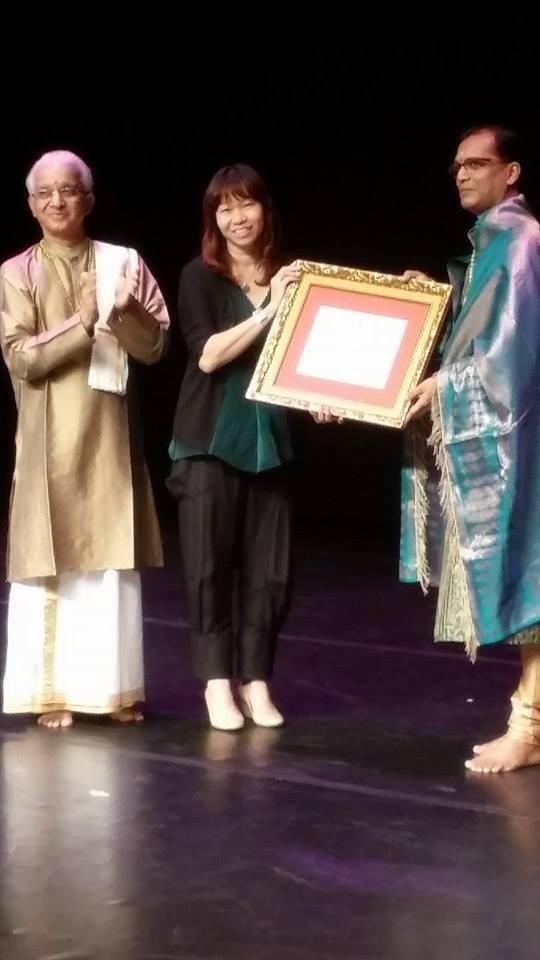
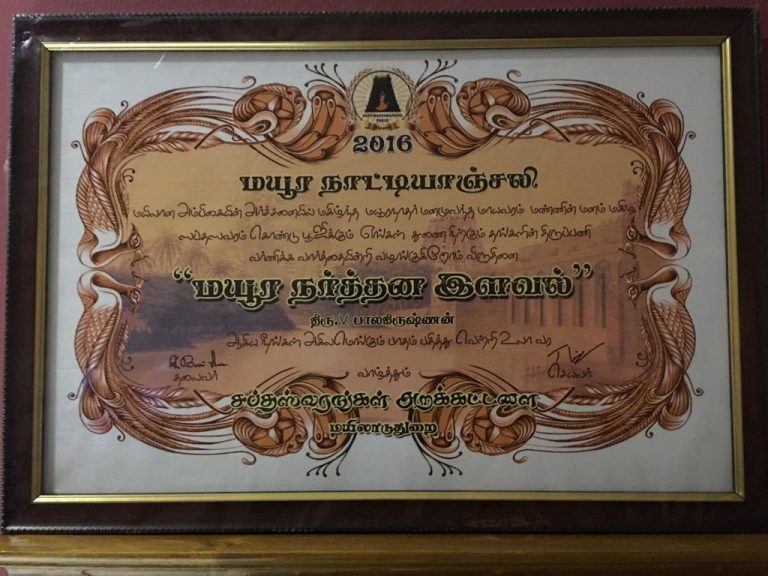
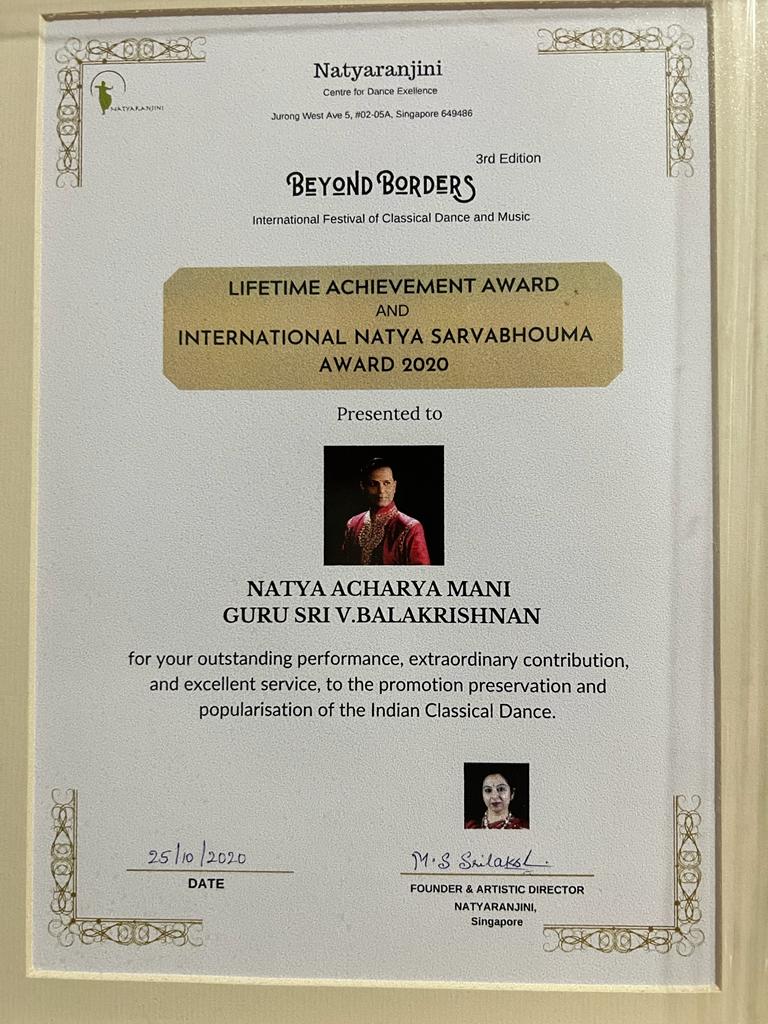
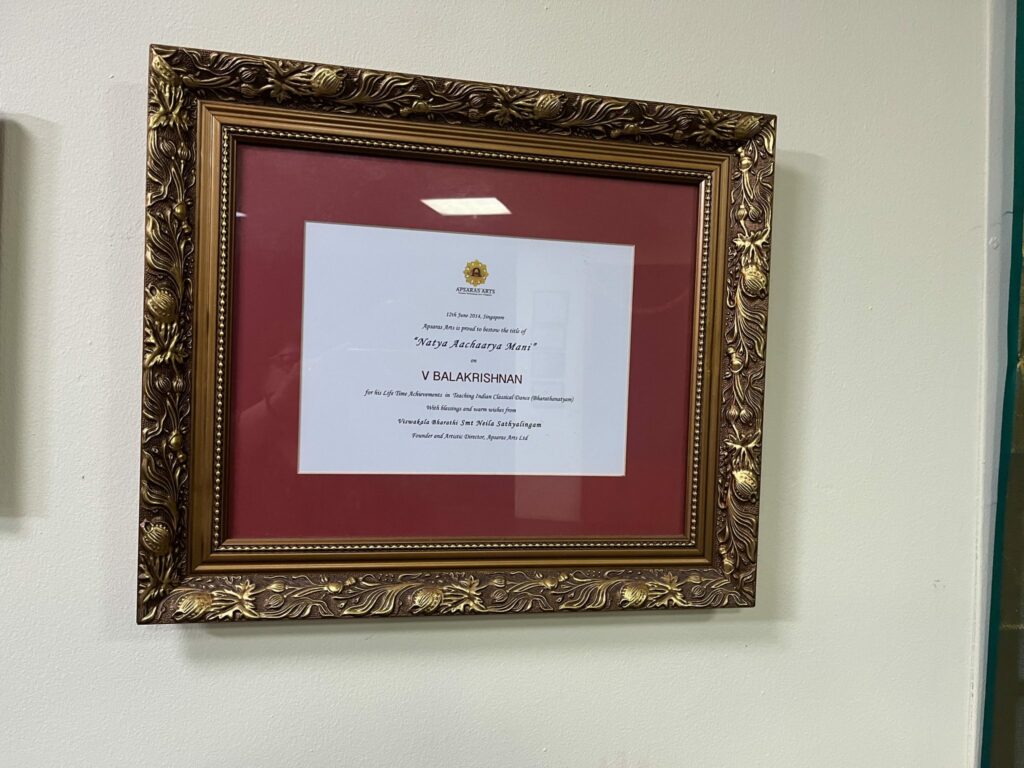
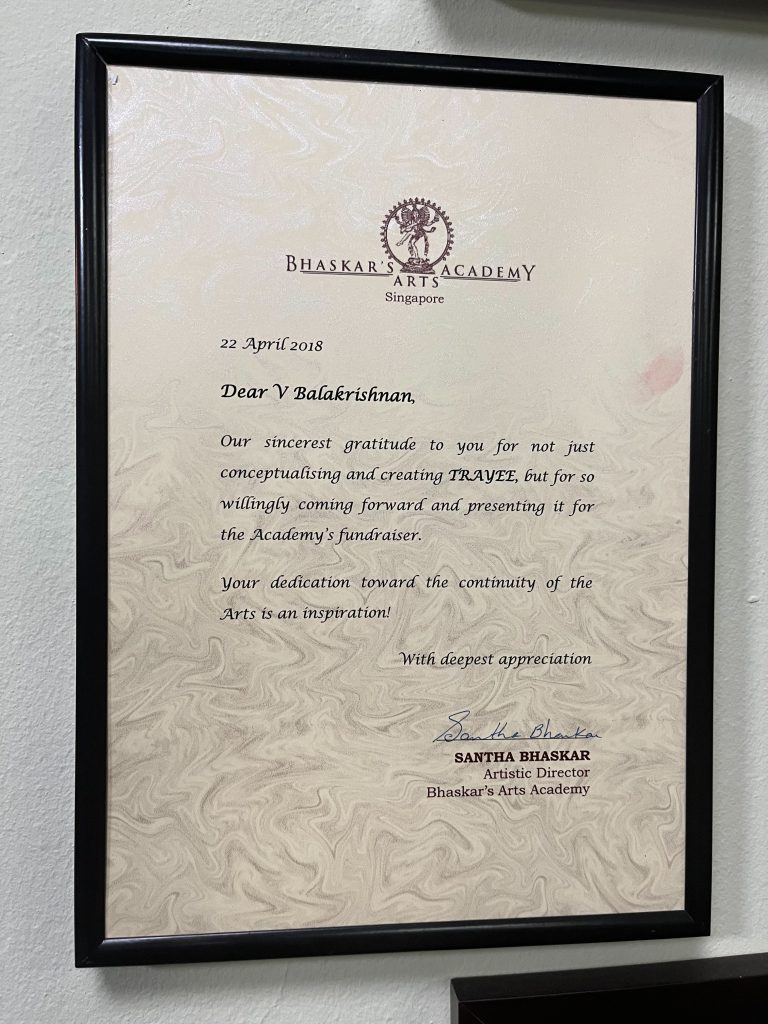
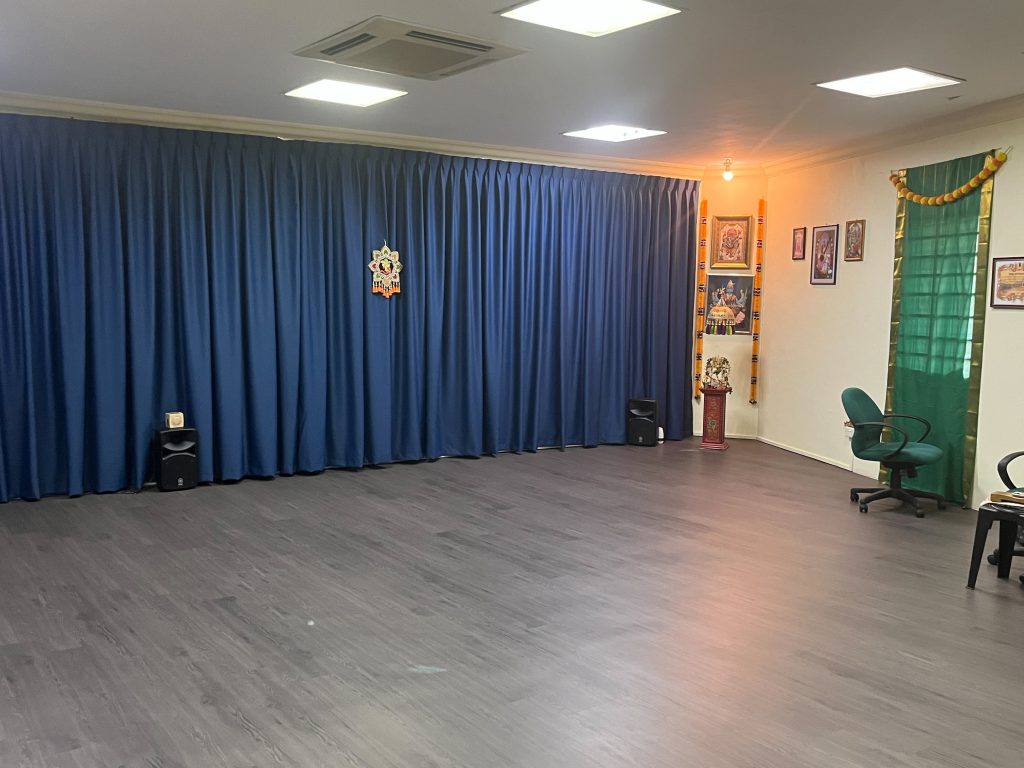
Over the years, I have composed music for a number of dancer choreographers like Ajit Bhaskar of Suvarna Fine Arts. A number of his productions including Dasavatharam, Anarkali, Vismaya Vrisksha, Bhumi Pranam, Shakunthalam and numerous other pieces for solo and Arangetrams. While he shares his conceptual ideas and jathis, I have given him my musical inputs and lyrical content. This is a great way for us to think differently about the stories of our deities and help each other as artistes. We get to interpret it simply and impart it to an audience, enabling them to understand the essence of the story better. I have also composed lyrics on non-traditional themes like mental health, time with dancers like Lalitha Ramani and Shreen Jeevita.
Over the decades, I have maintained good relationships and collaborations with many local artistes. I feel it is important to support fellow local artistes. Nrityalaya Aesthetic Society, the teaching wing of Bhaskar’s Arts Academy, sponsored my dance program with a live orchestra on my 50th birthday in 2005. I was very honoured and have great respect for both Mr & Mrs Bhaskar’s support for local artistes. They honoured my mother on stage and both Maama, Maami and Aravinth were present too. Aravinth has very kindly offered to publish my compositions in a book format under Apsaras Arts. I would love to, as I have learned so much, so it will be good to document it for posterity. My love for the Tamil language is boundless. I have always appreciated the use of language in its classical form and the sounds of the Tamil alphabet lends itself to music naturally.
You have seen the classical arts scene evolve rapidly over the decades. What’s your take on the scene today?
Today, youngsters are on social media to show off. Bharatanatyam has lost its divinity. The employment of aduvu korvais are underutilised. I may be very old- fashioned so I don’t advocate the wearing of sleeveless blouses or provocative dressing in dance. I appreciate good things. If you can carry it well, go ahead. As artistes, it’s important to embody some adherence to culture and aesthetics. To be an artiste, we need to appreciate and see your art, not your flesh. This may be a traditionalist’s view but for me, professionalism is important, I expect the same from my students as well. Even for students who have completed their Arangetram, I teach them the Nattuvangam. We discuss trends we observe in what we watch, how to incorporate music to practice and performance, how to approach Bharatanatyam by playing to your strengths, the art of choreography and interpretation of lyrics.
As a teacher and artiste, I don’t fall for unnecessary praise. I teach dance with sincerity and I don’t delegate my work to others. I don’t give in to parents’ demands and for me, the merit of the show warrants the role of each performer. As Maami’s students, besides myself, the Kesavan Sisters started their own dance school. When Maami passed away in 2017, I was very upset. I couldn’t shed tears and didn’t get to see her mortal remains. I lost my zeal to dance. She was my strength. That year, we had a performance in Chidambaram. My students danced but I couldn’t. Then I got a call from Mrs Bhaskar. She said, “I heard you’re not dancing. If you dance, your teacher will be happy. I have a show for you. You must come.” With her encouragement, I performed in Bhaskareeyam twice and in a separate production with Ajit and Vesnu. Aunty Bhaskar and I go back a long way. She also honoured me with an award as Maami and Aravinth did in Apsaras Arts. My gratitude is there for these elders who supported my dance journey. Now with Aunty Bhaskar gone as well, she too will be missed and remembered fondly.
How do you keep yourself going in terms of mental health and fitness?
Reading and learning in Tamil continues to matter to me. I have a large collection of books now. I have always maintained my body by eating and resting well. I only teach from Thursdays to Sundays. I actively dance with my students. Mondays to Wednesday I engage myself in other ways. My young students keep me agile and energetic. I enjoy imparting my life lessons to younger people. I share my early struggles as a male dancer. Bharatanatyam has kept me young and fed me. If I had a family, I probably would have died sooner. Till today, my Aramandi is not perfect since I formally started dancing only in my 30s. I feel I am still catching up; I have trained myself to absorb as much as possible. I watch a lot of dances, without judgement and try to learn from lessons and mistakes I observe. Till today, I am inspired by the cine dancers of yesteryears. Helen, Padmini, Vyjayantimala, Sayee-Subbalakshmi, Kuchalakumari, Raja Sulochana, EV Saroja. The films always carried Bharatanatyam in those days with lilting music and I enjoy watching camera angles and the way light falls on a dancer. Even today, I revisit these dancers of the past to see the way they executed their movements, how they synchronize with each other and dance with grace and abandon. There was elegance in their dance. Their talent and contributions have stood the test of time. I admire this enduring quality.
What’s next for V Balakrishnan in the coming years?
My dance school keeps me very busy. I feel motivated to produce and choreograph. I feel responsible to ensure my students continue their dance journey into adulthood. Creating my own shows keeps me engaged. I have been regularly performing in Tamil Nadu on invitation. I enjoy the audiences and the appreciation I receive there. In turn, they tell me I inspire them with my traditional values and continued zeal for dance at my age. My mother, till the end, was concerned about my welfare. I had to convince her that the path I had taken was the life I had chosen for myself. Dance is my breath and my life’s purpose.









